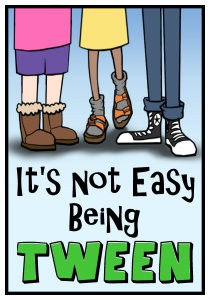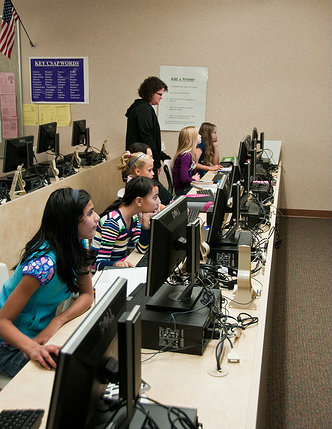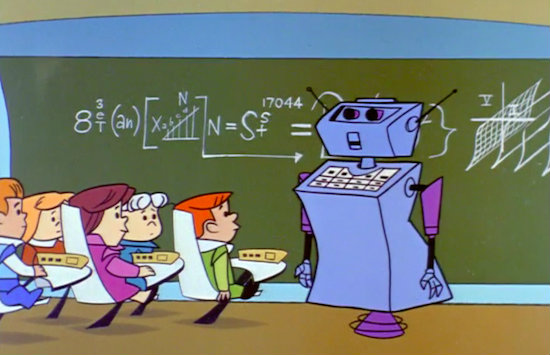Is Personalized Learning Really Personal for Kids?
A MiddleWeb Blog
 Because I read a lot of educational publications, I am fluent in jargon and buzzwords. A few years ago, I started seeing the phrase “Personalized Education” pop up regularly. At first, it seemed to be aligned with my educational philosophy of putting students first.
Because I read a lot of educational publications, I am fluent in jargon and buzzwords. A few years ago, I started seeing the phrase “Personalized Education” pop up regularly. At first, it seemed to be aligned with my educational philosophy of putting students first.
The concept of students driving their own learning and owning their progress was appealing and it meshed well with my teaching practice. More recently, the concept of “personalization” has morphed into something that gives me pause.
A product, not a process
The term now seems to signify a product, not a process. There are numerous pre-packaged software programs being touted as a solution to all of the challenges education faces today. Many are backed by big names and big dollars. They come with slick sales pitches and lofty claims of miraculous results. They also come with steep price tags and without proof of long-term efficacy.
Digital “learning management systems” (LMS) have now seized upon the term personalized learning to describe what they do. I am wary that they can deliver on all of their promises and, as with all promised miracle cures, I approach this one with a healthy dose of skepticism. Let’s dissect what is being promoted and try to separate the snake oil from the potential wonder drug.
1) Mass Customization?

From what I can see, these digital teaching products focus on individual achievement (not so secret code for raising test scores) and not on personal needs. They are basically practice for standardized tests and not designed for deep thought. To that extent, this can be a good use for a software program. Students do tend to prefer digital worksheets and flashcards to pencil and paper drudgery. But as a long-term educational practice, I find them lacking.
2) Day long computer screens
Visions of cubicle farms dance in my head as I imagine a classroom with every child plunked down in front of a computer screen, wearing earbuds, a teacher with a tablet weaving in between, and little to no talking. This may be fine on occasion, but I can’t imagine this would be acceptable to the majority of naturally social middle school students.
Ironically, at the same time these personalized learning programs are being promoted, there is renewed interest in social-emotional learning. It will be difficult to improve one’s social skills while interacting with devices and not humans.
3) Self directed learning?
The idea that a child can control his/her own academic destiny and choose what to learn next (as is advertised with some personalized learning programs) is appealing, but most students don’t know what they don’t know.
There is a reason why curriculum exists and why teachers are required to map out the scope and sequence of their courses. Much thought goes into the progression of skills and the background and foundational knowledge necessary to be successful with new learning.

Pupils should not have to muddle through unfamiliar material, trying to teach it to themselves. That necessitates a great deal of responsibility and capacities which most children don’t possess.
Learning is hard work and challenges have their place, but most students will choose to take the easy way out and may never reach their zone of proximal development to achieve growth.
Being a self-directed learner during the middle school years is rare, unless a child is extremely interested in a subject. Proponents of authentic personal learning realize that a child will spend an inordinate amount of time in areas of interest, but the information being “taught” through software programs don’t take this into account. The programs are still providing standardized information, just at a personalized pace.
4) Response to deficits vs higher learning
Based on my years teaching students with learning differences, I foresee that these personalized learning systems will focus on deficits and not truly allow for new, higher-level learning.
For example, when I taught special education, I had to fight for my students to be able to learn algebraic concepts because some math teachers felt they should not be able to progress if they hadn’t memorized their basic math facts. I demonstrated how students could understand the algebra if they were allowed to use a calculator or a chart for basic computation.
I feel that even the most sophisticated adaptive software program still lacks a teacher’s understanding and experience and will not allow for a student to compensate for a basic deficit (such as reading slowly or poor spelling). The result? Students become mired in the depths of rote learning hell.
Personalized learning in these instances is, in fact, just personalized practice. Who among us would choose to remain engaged in a class where you are forced to spend the bulk of your time completing digital worksheets and being reminded of your weaknesses?
5) Beyond right or wrong
The learning systems I researched focused predominantly on STEM subjects, and their primary function is providing questions that have a definite correct answer. This reminds me of Elroy Jetson’s robot teacher and homework machine, which do not result in good teaching and deep thinking.
I teach language arts. Much of what we do is interpreting literature, engaging in deep discussion, debating concepts, and writing our thoughts. How is computer code going to replicate this rich environment of shared ideas? Using a device may be an effective way to deliver tailored information, but it does not invite critical thought or help students take information, evaluate it, and transform it into knowledge and understanding.
6) The limits of data collection
I can understand the appeal of using these platforms to collect massive amounts of data on our children. There are even financial incentives from the government to do so. However, data doesn’t necessarily translate into beneficial results. Tracking what a child answered correctly is but one small data point and doesn’t give a picture of the entire child.
Before purchasing one of these systems, I would want to know whether they can come anywhere close to accomplishing what a talented teacher can achieve. I suspect not. Good teachers have always informed their decisions with data, both subjective and objective. A computer, no matter how adaptive, can only provide a snapshot at any given time. The best LMS programs may lull some into believing they are witnessing the equivalent of human decision-making, but they are not.
As with everything in modern education, much depends on the financial resources of the school district. If one accepts the claims of the developers that these learning systems are the magic bullet to close the achievement gap and allow all students to achieve more than ever before, some severely underfunded districts may be tempted to economize by reducing teacher positions (saving salary and benefits costs) and let machines do more of the “teaching.” That will be tragic.
No one simple solution
I don’t mean to imply that I am a technophobe and against any digital learning experiences. Quite the contrary. There are myriad ways in which technology can enrich our teaching and our students’ lives. I see a great deal of promise in blended learning practices, for example.
I am just wary of marketing claims of a shiny object being sold as a magic bullet. If there were one perfect way to educate a child, it would have been found by now. As with all professions dealing with people and not products, there isn’t one clear-cut, automated solution.
I would hope that educators and administrators in positions to make crucial educational decisions take a long, hard look at the claims of companies selling these programs before investing in the latest miracle cure.
Feature image source: George Lawie





























